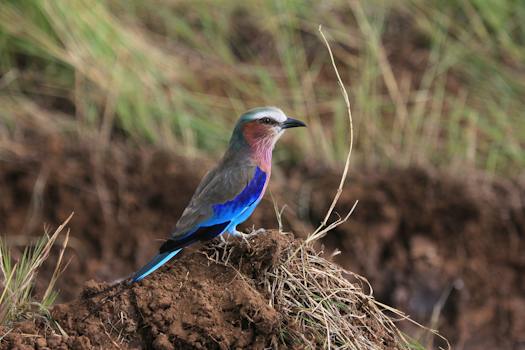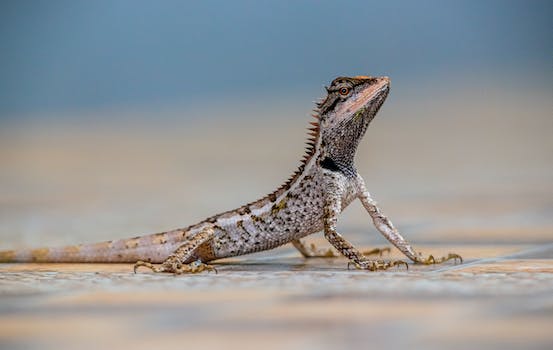

-
Table of Contents
Discover the captivating world of The Redpoll: A Fascinating Bird Species.
Introduction
The Redpoll is a fascinating bird species that belongs to the finch family, scientifically known as Carduelis flammea. This small passerine bird is native to the northern regions of Europe, Asia, and North America. With its distinctive red cap and black chin, the Redpoll is easily recognizable. It is known for its unique adaptations to cold climates, such as its ability to survive in sub-zero temperatures and its specialized beak for extracting seeds from cones. The Redpoll's migratory behavior and its role in seed dispersal make it an important species in its ecosystem. Overall, the Redpoll's characteristics and behaviors make it a captivating bird species to study and appreciate.
The Redpoll's Habitat and Distribution
The Redpoll, also known as the Acanthis flammea, is a fascinating bird species that can be found in various parts of the world. This article will focus on the Redpoll's habitat and distribution, shedding light on where these birds can be found and the environments they thrive in.
The Redpoll is a small bird that belongs to the finch family. It is known for its vibrant red cap, which distinguishes it from other bird species. These birds are primarily found in the northern regions of North America, Europe, and Asia. They have a wide distribution range, spanning across different countries and continents.
In North America, the Redpoll can be found in Alaska, Canada, and parts of the northern United States. They are known to inhabit areas such as tundra, boreal forests, and open woodlands. These birds are well-adapted to cold climates and can withstand harsh winter conditions. Their ability to survive in extreme temperatures is due to their unique physical characteristics, such as their dense plumage and small size.
In Europe, the Redpoll can be found in countries such as Norway, Sweden, Finland, and Russia. They are commonly seen in coniferous forests, as well as birch and alder woodlands. These birds are known to migrate during the winter months, moving to more southern regions in search of food and milder climates. Their migration patterns can vary depending on factors such as food availability and weather conditions.
In Asia, the Redpoll can be found in countries such as China, Mongolia, and Japan. They are often seen in mountainous regions, as well as areas with shrubs and grasslands. These birds are known to form large flocks during the winter months, which helps them find food and protect themselves from predators. Their flocks can consist of hundreds or even thousands of individuals, creating a mesmerizing sight for birdwatchers and nature enthusiasts.
The Redpoll's habitat and distribution are closely linked to their diet. These birds primarily feed on seeds, especially those from birch and alder trees. They have a specialized beak that allows them to extract seeds from cones and catkins. During the winter months, when food sources are scarce, they also feed on buds, twigs, and even tree bark. Their ability to adapt their diet to different environments is one of the reasons why they have such a wide distribution range.
In conclusion, the Redpoll is a fascinating bird species that can be found in various parts of the world. Their habitat and distribution are closely tied to their ability to survive in cold climates and adapt to different environments. Whether it's the tundra of North America, the forests of Europe, or the mountains of Asia, these birds have managed to thrive in diverse landscapes. Their vibrant red cap and unique physical characteristics make them a delight to observe for birdwatchers and nature enthusiasts alike.
Unique Characteristics and Adaptations of the Redpoll

The redpoll is a fascinating bird species that can be found in various parts of the world, including North America, Europe, and Asia. This small bird is known for its unique characteristics and remarkable adaptations that allow it to thrive in different environments.
One of the most distinctive features of the redpoll is its plumage. The bird has a reddish cap on its head, which gives it its name. Its body is mostly brown, with streaks of black and white on its wings and tail. This combination of colors helps the redpoll blend in with its surroundings, providing it with camouflage and protection from predators.
Another interesting characteristic of the redpoll is its beak. This bird has a small, conical beak that is perfectly adapted for its diet. The redpoll primarily feeds on seeds, especially those from birch and alder trees. Its beak is strong enough to crack open the tough outer shells of these seeds, allowing it to access the nutritious contents inside. This adaptation enables the redpoll to survive in areas where other food sources may be scarce.
In addition to its beak, the redpoll has other adaptations that help it survive in harsh environments. For instance, this bird has a thick layer of feathers that provide insulation and keep it warm during cold winters. It also has a high metabolic rate, which allows it to generate heat and maintain its body temperature even in freezing temperatures. These adaptations make the redpoll well-suited for living in northern regions where the climate can be extremely cold.
The redpoll is also known for its unique breeding behavior. Unlike many other bird species, the redpoll does not build its own nest. Instead, it takes advantage of abandoned nests built by other birds, such as the American goldfinch. This behavior is known as nest parasitism. The redpoll lays its eggs in the nests of other birds and relies on them to incubate and raise its young. This strategy allows the redpoll to save energy and resources, as it does not have to build and maintain its own nest.
Furthermore, the redpoll has the ability to change its diet depending on the season. During the breeding season, when insects are abundant, the redpoll includes insects in its diet to provide additional protein for its growing chicks. In contrast, during the winter months when insects are scarce, the redpoll relies heavily on seeds as its primary food source. This dietary flexibility allows the redpoll to adapt to changing environmental conditions and ensure its survival.
In conclusion, the redpoll is a fascinating bird species with unique characteristics and remarkable adaptations. Its plumage, beak, and thick feathers make it well-suited for surviving in different environments, especially in cold regions. Its breeding behavior and dietary flexibility further contribute to its ability to thrive in various conditions. The redpoll is truly a remarkable bird that continues to captivate researchers and bird enthusiasts alike.
The Redpoll's Role in the Ecosystem
The Redpoll, a small bird species found in the northern regions of North America and Europe, plays a crucial role in the ecosystem. Despite its small size, this bird has a significant impact on the environment and other species within its habitat.
One of the primary roles of the Redpoll in the ecosystem is seed dispersal. As the Redpoll feeds on various plants and trees, it inadvertently picks up seeds on its beak and feathers. These seeds then get transported to different locations as the bird moves around, aiding in the dispersal of plant species. This process is essential for the survival and distribution of plants, as it allows them to colonize new areas and maintain genetic diversity.
Additionally, the Redpoll's feeding habits contribute to the control of insect populations. These birds primarily feed on insects during the breeding season, consuming large quantities of pests such as mosquitoes, flies, and aphids. By preying on these insects, the Redpoll helps to keep their populations in check, preventing them from becoming overwhelming and causing damage to crops or other plant species.
Furthermore, the Redpoll's nesting behavior provides nesting opportunities for other bird species. These birds build their nests in shrubs and trees, creating small, cup-shaped structures made of twigs, grass, and feathers. Once the breeding season is over, these nests are abandoned, providing ready-made homes for other birds that may not have the ability or resources to build their own nests. This nesting behavior helps to support the overall bird population and promotes biodiversity within the ecosystem.
The Redpoll also serves as a vital food source for predators in its habitat. Birds of prey, such as hawks and owls, rely on the Redpoll as a source of sustenance. The abundance of Redpolls in an area can attract these predators, ensuring their survival and maintaining a balanced predator-prey relationship within the ecosystem. This relationship is crucial for the overall health and stability of the ecosystem, as it helps to control the population of both the Redpoll and its predators.
Moreover, the Redpoll's presence in an area can indicate the health of the ecosystem. These birds are highly sensitive to environmental changes and are often considered bioindicators. Their population size and behavior can provide valuable insights into the overall health of the ecosystem, including the availability of food sources, the presence of pollutants, and the impact of climate change. Monitoring the Redpoll population can help scientists and conservationists assess the state of the environment and take appropriate measures to protect it.
In conclusion, the Redpoll, despite its small size, plays a crucial role in the ecosystem. From seed dispersal to insect control, nesting opportunities for other bird species, and serving as a food source for predators, the Redpoll's presence has a significant impact on the environment. Additionally, its sensitivity to environmental changes makes it a valuable bioindicator. Understanding and protecting the Redpoll and its habitat is essential for maintaining the balance and health of the ecosystem as a whole.
Q&A
1. What is the scientific name of the Redpoll?
The scientific name of the Redpoll is Carduelis flammea.
2. Where is the natural habitat of the Redpoll?
The Redpoll is native to the northern regions of North America, Europe, and Asia.
3. What is the diet of the Redpoll?
The Redpoll primarily feeds on seeds, especially those of birch and alder trees, but also consumes insects during the breeding season.
Conclusion
The Redpoll is a fascinating bird species due to its unique characteristics and behaviors. Its ability to survive in harsh environments, such as the Arctic, showcases its adaptability. The red crown and black chin patch of the male redpoll make it easily distinguishable, while the female has a more subtle appearance. These birds are known for their acrobatic feeding habits, often hanging upside down to extract seeds from plants. The redpoll's ability to change its diet based on food availability is another interesting aspect of its behavior. Overall, the redpoll's distinct features and adaptable nature make it a captivating bird species worth studying and appreciating.












